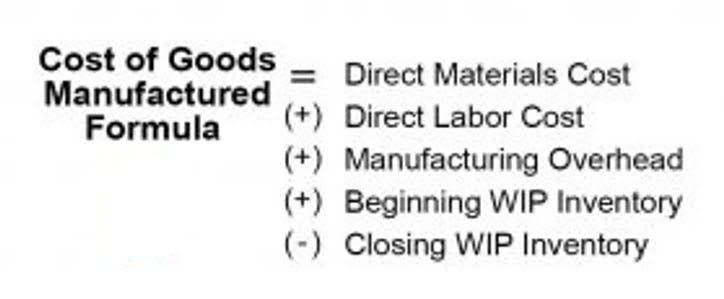
At times, your customers may directly deposit funds into your business’ bank account, but your business will not notified about this the bank statement is received. Greg adds the $11,500 of deposits in transit to his bank statement balance, bringing him to $99,500. He also subtracts the $500 in bank fees from his financial statement balance, bringing him to $99,500 and balancing the two accounts. Common errors include entering an incorrect amount or omitting an amount from the bank statement. It’s recommended for a company to perform a bank reconciliation at least once a month. If your company receives bank statements more frequently, for example, every week, you may also choose to do a bank reconciliation for every statement you receive.
- We strongly recommend performing a bank reconciliation at least on a monthly basis to ensure the accuracy of your company’s cash records.
- By systematically reviewing and verifying accounts receivable balances, businesses can maintain financial transparency, mitigate risks, and optimise their financial performance.
- Completing the necessary data entry duties will ensure that your accounts are accurately balanced.
- These checks are in transit, so they haven’t yet been deposited into the company’s bank account.
- The cash account balance in an entity’s financial records may also require adjusting in some specific circumstances, if you find discrepancies with the bank statement.
Compare top picks for business accounting software
By systematically reviewing and verifying accounts receivable balances, businesses can maintain financial transparency, bank reconciliation mitigate risks, and optimise their financial performance. You should complete a bank reconciliation at regular intervals for all bank accounts, to ensure that your cash records are correct. Otherwise, you may find that cash balances are much lower than expected, resulting in bounced checks or overdraft fees.
- Accurate recording keeping is a vital aspect of any businesses and nowhere is this more true that in your…
- Try FreshBooks for free to streamline your tax preparation and bank reconciliations today.
- This means that the company’s bank balance is greater than the balance reflected in the cash book.
- Ideally, you should run a reconciliation each time you receive the statement from your bank.
- There are three types of reconciliation that can play a key role in a company’s accounting records.
Bank reconciliation statement
Compare the ending balance of your accounting records to your bank statement to see if both cash balances match. This reconciliation process ensures that the total invoice amount matches the sum of payments received plus the remaining balance, thereby verifying the accuracy of accounts receivable records. Any discrepancies can be identified and investigated further to maintain accurate financial records. By following these steps, businesses can effectively reconcile their accounts receivable balances, identify and address discrepancies, and maintain accurate financial records. This process helps ensure the integrity of the accounts receivable ledger and enables businesses to make informed decisions based on reliable financial information. In summary, accounts receivable reconciliation is a critical process that ensures the accuracy, integrity, and reliability of petty cash a company’s financial records related to customer transactions.
Check the income on your books
The cash account balance in an entity’s financial records may also require adjusting in some specific circumstances, if you find discrepancies with the bank statement. After fee and interest adjustments are made, the book balance should equal the ending balance of the bank account. For instance, if you use QuickBooks Online, you’ll use the reconcile function to pull up all your bank transactions during a period of time you specify.
- The bank may send you a bank statement at the end of each month, each week, or, if your business has a large number of transactions, they may even send one at the end of each day.
- Before you reconcile your bank account, you’ll need to ensure that you’ve recorded all transactions from your business until the date of your bank statement.
- The first step involves identifying any deposits and checks that the bank has not processed at the statement date.
- At times, the balance as per the cash book and passbook may differ due to an error committed by either the bank or an error in the cash book of your company.
- At Business.org, our research is meant to offer general product and service recommendations.
Subscribe to Chaser’s monthly newsletter
You can earn our Bank Reconciliation Certificate of Achievement when you join PRO Plus. To help you master this topic and earn your certificate, you will also receive lifetime access to our premium bank reconciliation materials. These include our visual tutorial, flashcards, cheat sheet, quick tests, quick test with coaching, and more. The bank section lists items in transit from the depositor to the bank and bank errors.
How often should you perform bank reconciliation?
Such information is not available to your business immediately, so you record no entry in the business’ cash book for the above items. You will know about this only when you receive the bank statement at the end of the month. As a result, your balance as per the passbook would be less than the balance as per the cash book. Keeping on top of your https://www.bookstime.com/articles/part-time-accounting bank reconciliation ensures that you’re always aware of your company’s financial situation.

At times, your business may either omit or record incorrect transactions for checks issued, checks deposited, or the wrong total, etc. As a result of these direct payments made by the bank on your behalf, the balance as per the passbook would be less than the balance as per the cash book. After adjusting all the above items, you’ll end up with the adjusted balance as per the cash book, which must match the balance as per the passbook. After including all the amounts identified in Step 3, your statements should display the same final balance. If any discrepancies cannot be identified and reconciled, it may signal an error or risk of fraud which your company can investigate further. To do this, businesses need to take into account bank charges, NSF checks, and errors in accounting.

In the case of personal bank accounts, like checking accounts, this is the process of comparing your monthly bank statement against your personal records to make sure they match. Many banks allow you to opt for fee-free electronic bank statements delivered to your email, but your bank may mail paper bank statements for a fee. Reconciling is the process of comparing the cash activity in your accounting records to the transactions in your bank statement. This process helps you monitor all of the cash inflows and outflows in your bank account. The reconciliation process also helps you identify fraud and other unauthorized cash transactions. As a result, it is critical for you to reconcile your bank account within a few days of receiving your bank statement.

How to Prepare a Bank Reconciliation

If your beginning balance in your accounting software isn’t correct, the bank account won’t reconcile. This can happen if you’re reconciling an account for the first time or if it wasn’t properly reconciled last month. Once you complete the bank reconciliation statement at the end of the month, you need to print the bank reconciliation report and keep it in your monthly journal entries as a separate document. This document will make auditors aware of the reconciled information at a later date.
